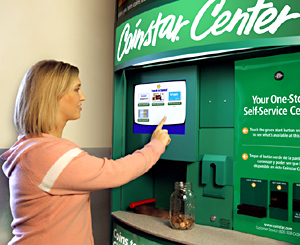Would You Stop to Pick Up a Penny?
|
"Making Cents"
The Signal
Saturday, March 18, 2006
| A |
The heading for the column was, "Are You a Penny Picker-Upper?" The vote resulted in a surprising 80 percent saying "yes."
That number does not jibe with our observations of cents lying in wait in the same spot day after day on the street, or hour after hour on the mall floor.
If the survey asked the age of the respondents, most of those saying "yes" would be older adults who remember hard times when a one-cent postcard and the one-cent gum machine were commonplace.
Kids almost never pick up pennies. In fact, many coins can be found on the grounds after school at any elementary or middle school.
AOL also asked what people do with these coins. The majority said they hoard them until there are enough to cash in. About 40 percent said they accumulate only a few at a time and then spend them. A small percentage said they avoid them as much as possible.
Testing people's knowledge, the survey asked respondents to identify the first authorized U.S. coin. Choices were the dollar coin, dime or penny. AOL said the answer was the penny. Actually, the first authorized U.S. coins were the silver half dime (disme) and dime of 1792. The first U.S. cent was struck in 1793 (although a pattern cent dated 1792 exists).
The survey also asked how many design changes there have been in the one-cent coin. The answer is 11. There were five different large cent designs and six small cent designs — the flying eagle cent (1856-1858), the 1859 Indian head cent (no shield), the copper-nickel Indians of 1860-1864, the bronze Indian head, the wheat-back Lincoln and the current Lincoln Memorial cent.
The next question was how many cents have been minted to date. The answer is 300 billion.
The final question was, "What year was the Lincoln cent first issued?" The answer is 1909.
The survey found that 84 percent of CoinStar machine users are females. (CoinStar machines are the machines found in grocery stores and other locations that give you a cash receipt for your coins, usually for a small discount. The receipt can be used in the location where the machine is housed.). CoinStar reports that 66 percent of Americans favor keeping the one-cent denomination.
According to author Bernice Kanner, 50 percent of customers refuse change of one cent; 35 percent would not bother with a refund of less than a dollar; tips consisting of pennies are considered inappropriate and even insulting (regardless of the total amount); and when tossing up a coin, more than half the calls are for "heads."
The fate of our one-cent coins lies more in the fact that as long as two things prevail, so will the coins. The first is that the U.S. mints make about 20 percent profit (called "seignorage" — the difference between a coin's production cost and its face value) on the manufacture of one-cent coins.
Second, as long as the dollar holds up against other currencies, we will have the cent. When the dollar falls below half its current value — let us say against the euro — then the cent would become obsolete.
Currencies such as the Mexican peso, Brazilian cruzeiro, Swiss franc and Japanese yen are worth much less than half a dollar; thus they have no equivalent of a one-cent coin. Countries with a unit worth more than 50 cents still have one-cent coins — the British pound, Canadian dollar and the euro.
In 2009, we will have commemorative cents honoring Lincoln's 200th birthday. After that, the life of the cent will be shortened. Surely it cannot last the whole 21st Century. Inflation at even 2 percent per annum would devalue it to near zero. Spend them now.
Dr. Sol Taylor of Sherman Oaks is president of the Society of Lincoln Cent Collectors and author of The Standard Guide to the Lincoln Cent. Click here for ordering information.
©2006, THE SIGNAL · ALL RIGHTS RESERVED.
